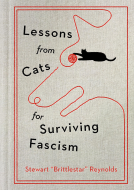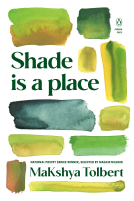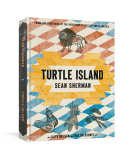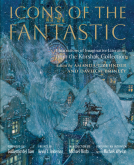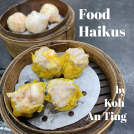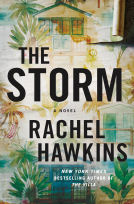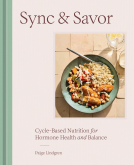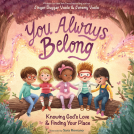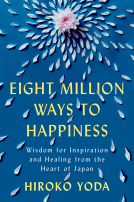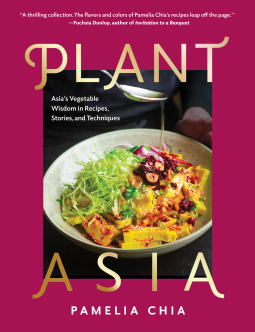
PlantAsia
Asia's Vegetable Wisdom in Recipes, Stories and Techniques
by Pamelia Chia
This title was previously available on NetGalley and is now archived.
Send NetGalley books directly to your Kindle or Kindle app
1
To read on a Kindle or Kindle app, please add kindle@netgalley.com as an approved email address to receive files in your Amazon account. Click here for step-by-step instructions.
2
Also find your Kindle email address within your Amazon account, and enter it here.
Pub Date Oct 28 2025 | Archive Date Oct 27 2025
Talking about this book? Use #PlantAsia #NetGalley. More hashtag tips!
Description
This file is NOT currently available for Kindle. We apologize for any inconvenience. If you have difficulties with downloading, please email us (at publicity@theexperimentpublishing.com) for assistance or leave a note in lieu of a review rating.
PlantAsia is a continent-spanning celebration of Asia’s diverse and evolving food traditions that will transform the way you think about and cook with vegetables. Combining storytelling, technique, and unique flavor pairings, chef and author Pamelia Chia challenges and expands what we imagine when we think of vegetarian cooking.
Eight chapters, each focused on a different cooking technique, showcase recipes from more than fifteen countries:
Raw: Thunder Tea Kimbap, Naengmyeon with Watermelon Dongchimi
Steamed and Blanched: Watercress Noodles with Split Pea Fritters, Chayote and Glass Noodle Dumplings
Simmered: Beet Curry with Coconut Sambal, Bittergourd in Soy-Caramel Sauce
Fried: Tofu Puff Stir-Fry with Lemongrass and Long Beans, Fig and Brie Hotteok
Deep-Fried: Spinach Chaat with Chickpeas and Yogurt, Hot Butter Mushrooms
Charred and Grilled: Beer-Battered Eggplant Soba, Grilled Rice Paper with Tofu Sisig
Roasted and Baked: Charred Brussels Sprouts with Grapefruit and Yuba, Butternut Squash Dengaku
Sweetened: Chili-Flecked Jalebis with Mango Yogurt, Blackberry and Peach Gum Shortcake
Interviews and recipes from two dozen acclaimed chefs, food writers, and cookbook authors offer authentic and layered perspectives on the present and future of Asian cooking. Plus, Chia includes a detailed guide to buying and cooking with Asian ingredients.
Perfect for adventurous foodies, fans of Asian cuisines in search of inspiring and original recipes, and anyone looking for one-of-a-kind, vegetable-forward meals, this ambitious vegetarian cookbook is a dynamic and exciting celebration of all that vegetables have to offer.
Contributors include: Andrea Quynhgiao Nguyen, Cameron Stauch, Cathy Erway, John Chantarasak, Mina Patel, Sonoko Sakai, Zoey Xinyi Gong, and more!
Available Editions
| EDITION | Other Format |
| ISBN | 9798893030877 |
| PRICE | $32.50 (USD) |
| PAGES | 304 |
Available on NetGalley
Average rating from 26 members
Featured Reviews
Quick Summary: An instructive guide and culinary education in Asian cuisine
My Review: PlantAsia: Asia's Vegetable Wisdom in Recipes, Stories and Techniques by Pamelia Chia is a "Cooking, Food & Wine" masterpiece. It is scheduled for release on 10/28/25.
About the Book: "PlantAsia is a continent-spanning celebration of Asia’s diverse and evolving food traditions that will transform the way you think about and cook with vegetables. Combining storytelling, technique, and unique flavor pairings, chef and author Pamelia Chia challenges and expands what we imagine when we think of vegetarian cooking."
In My Own Words: PlantAsia is an inspiring resource and guide that is filled with recipes, Q & As, pictures, instructionals, and more.
What I Liked/Loved/Cannot Wait to Try:
- I loved the way the author invited readers into her history. Learning about what led her toward this project and to this lifestyle personalized it. I could easily relate to what she shared.
- I found the notes on recipes to have helpful suggestions that would aid me in going forward.
- I really loved the pictures of the prepared food and assembled dishes. When chefs, cooks, culinary teachers, food writers, and anyone in food creation provides visual aids, it proves to be incredibly helpful. It helps me to know what a meal should look like. I find it moves me toward a targeted goal much better.
- I loved the artwork and Q & A with the featured contributors. I was familiar with a couple, but this added treat allowed me to become familiar with more.
- I liked how the book was sectioned. It was perfect...from A to Z! I particularly appreciated Expanding Your Asian Pantry.
- I loved the simplicity, with regard to the recipes. The instructions, the ingredient lists, and the step-by-step preparation guides were invaluable.
- I super loved all of the eggplant recipes!!! Often, people do not know how to prepare them, but this book showed just how versatile this yummy fruit (masquerading as a vegetable) really is/can be.
- I LOVED the recipes. I cannot wait to try (abbreviated listing, per section):
Raw: Garden Greens Sambol, Naengmyeon with Watermelon Dongchimi
Steamed and Blanched: Chayote and Glass Noodle Dumplings, Mushroom Rice Rolls with Bean Sprout Salad
Simmered: Butternut Squash Kootu with Spiced Chickpeas, Tempered Beans with Tomato Casarecce
Fried: Stir-Fried Glass Noodles with Cilantro and White Pepper, Fig and Brie Hotteok
Deep-Fried: Eggplant Croquettes with Cilantro Mayonnaise, Fried Cauliflower with Gochujang Glaze
Charred and Grilled: Kulawong Talong, Smoky Eggplant Raita with Focaccia
Roasted and Baked: Tumeric Carrots with Dill and Mung Bean Jelly, Pumpkin and Pearl Couscous Salad
Sweetened: Steamed Mochi-Stuffed Dates, Black-Sticky Rice Pudding with Coconut Milk and Mango
*** Honorable Mentions: Hot Butter Mushrooms, Tempeh Satay with Sambal Matah, Kare-Kare-Style Roasted Sweet Potatoes, Chili-Flecked Jalebis with Mango Yogurt, Blackberry and Peach Gum Shortcake
My Final Say: This fantastic work of art is so simple and so beautifully done. I cannot wait to get my hands on a physical copy for my personal library. Not only is the content easy to follow, but it is also inspiring. I plan to refer to it often.
This book belongs in every kitchen. I highly recommend it.
Other: I could easily see this content being carried over into a cooking show or into a specialized food series. It was such an educational experience. I know others will be drawn to it.
Rating: 5/5
Recommend: Yes
Audience: A
Keeper: Yes
Favorites Shelf: Yes
Besties Shelf: Yes
Status/Level: ⭐️⭐️⭐️⭐️⭐️
Sincere appreciation is extended to the author, to the publisher (The Experiment), and to NetGalley. Thank you so very much for granting access to this amazing work in exchange for an honest review. The words I have shared are my own and have been voluntarily submitted. I look forward to reading and learning more from this Singaporean culinary teacher and food writer. Brava!
 Librarian 302650
Librarian 302650
"PlantAsia is a continent-spanning celebration of Asia’s diverse and evolving food traditions that will transform the way you think about and cook with vegetables. Combining storytelling, technique, and unique flavor pairings, chef and author Pamelia Chia challenges and expands what we imagine when we think of vegetarian cooking."
This is a really cool book that gives home chefs of all levels the opportunity to try their hands at vegetarian and vegan recipes that are a little different from what you would find in general plant-forward cookbooks. There's lots of notes on spices, techniques, and ingredients that help familiarize readers with Asian ingredients and cooking, making this book very beginner-friendly. Aside from the cool recipes and lovely pictures are stories and anecdotes from chefs on their favourite ingredients, textures, and background.
I'm hoping to try to make chayote and glass noodle dumplings and the fig and brie hotteok! YUM
I received a free ebook copy of this book from NetGalley in exchange for a fair review.
I received an ARC of this cookbook from NetGalley in exchange for an honest review.
This is a wonderful cookbook. It's filled with wonderful recipes but also gives some backstory on the author's life/food journey!
 Reviewer 503414
Reviewer 503414
This vegetable based cookbook was great and it had a lot of information on how to cook vegetables. I highly recommend this cookbook.
Thank you to NetGalley and the publishers for a review copy.
 Reviewer 1752153
Reviewer 1752153
PlantAsia joins the growing shelf of pan-Asian vegan and vegetarian cookbooks, and so invites comparison to two other relatively recent titles: Sasha Gill’s East Meets Vegan and Meera Sodha’s East. There’s minimal overlap with Gill’s book, which leans into popular takeout-style dishes and feels like a date-night cookbook with most recipes scaled for 2-4 servings and composed of items available at mainstream grocery stores. Sodha’s East, on the other hand, is more closely aligned with PlantAsia and features a mix of modern fusion recipes and plant-based interpretations of popular classic dishes, often incorporating less traditional ingredients.
Like both those books, PlantAsia is visually engaging. It features step-by-step photos for some of the more involved dishes and informative interviews with contributing chefs, both vegetarian and non-vegetarian.
What sets PlantAsia apart is the ambitious range of countries and cultures it represents, many of which haven’t yet had significant representation in recent vegetarian and vegan cookbooks. The featured cuisines and influences include Burmese, Chinese, Vietnamese, Korean, Sri Lankan, Japanese, Taiwanese, Indian, Hakka, Singaporean, Thai, Laotian, Malay, Filipino, Tibetan, Cambodian, Indonesian, and Hainanese. This breadth brings both an exciting opportunity to explore new flavors and a potential challenge in sourcing ingredients, depending on local availability.
There’s no singular unifying theme beyond an Asian inspiration, so the recipes vary widely from modern fusion (often with an Australian twist) to homestyle dishes. You won’t find textbook versions of any dish; instead, the book offers interpretations that creatively blend tradition with innovation.
The diversity of contributors mirrors that of the cuisines. The book introduces a range of newer voices while also including familiar names, like Sonoko Sakai, who have their own cookbooks. However, this variety results in some variability in technique and recipe formatting, leading to less standardization across the book.
The recipes vary in complexity. Some are quick and approachable, while others, like the Watercress Noodles with Split Pea Fritters, for example, are more involved.
I tried five recipes based on ingredients I had on hand:
● Tofu and Chive Dumplings with Peanut Sauce: Quick to assemble; the mild, creamy dumplings are a great blank slate for the peanut sauce and chili crisp.
● Stir-Fried Sweetheart Cabbage: Simple and adaptable. One cabbage yielded enough for multiple meals: first as a side, then mixed in a noodle stir-fry, and later in buns and dumplings.
● Ginataang Munggo: The fried tofu provided a satisfying texture contrast in this creamy mung bean stew.
● Butternut Squash Dengaku: Sweet and pleasant, but ultimately a bit forgettable.
● Steamed Mochi-Stuffed Dates: Made without the optional osmanthus flowers, a little one-note: soft and sweet stacked on more soft and sweet.
I hope to revisit this book in the future once I’ve sourced a few more ingredients to try more of the recipes, including the chickpea tofu in the current cover image.
That said, a few quibbles around usability:
● Clear labeling of vegan versus vegetarian (or egg-free, dairy-free, etc.) would be helpful for the likely intended audience.
● Some vegan substitutions are mentioned in headnotes or ingredient lists, but more consistent and clearly marked alternatives would improve accessibility.
● Organizing recipes by cooking technique doesn’t align with how many home cooks plan meals. Organizing by region, ingredient, course, flavor profile, or preparation time might make navigation easier and discovery more intuitive.
Thank you to The Experiment and NetGalley for providing an advance reading copy.
Thank you NetGalley for this ebook in exchange for an honest review.
I never thought plant based foods were boring (a cliché you hear that they speak about in the book, and try to overcome) but this book really took vegan dishes to a whole new level. Some ingredients would be hard for me to source where I am, but the recipes and pictures were super appetising, with bits and pieces of history interspersed between recipes. Most recipes I really, really want to try though so I will try my best to find the ingredients. Great book!
 Media/Journalist 16509
Media/Journalist 16509
This is a beautiful cookbook with adventurous, authentic Asian vegan recipes of all sorts. There is a full page photo (or more) of every recipe, along with interviews with vegan Asian chefs. I liked the layout— the chapters are broken down by raw, steamed, etc instead of by course. The dishes all seem very flavorful and inspired. You may have to work to source some of the ingredients if you are not near a large Asian community but most should be fairly easy to find. No nutritional information is provided. There is a fair bit of wheat and soy in the recipes but a lot will work for people with allergies and I appreciated the instructions for things like chickpea tofu. It’s a fun, interesting cookbook.
I read a temporary digital copy of this book via netgalley.
Thank you Netgalley, The Experiment, and Pamelia Chia for sending me this advanced review copy for free. I am leaving this review voluntarily.
This is a really great vegetarian cookbook, that even meat eaters will love! The photos were beautiful and shoed the food very well. I was getting so hungry while reading through this cookbook. There were also a ton of very beautiful paintings too!
I enjoyed the detailed information about what ingredients to add to make up for the things that are lacking when not using meat. You sometimes loose richness or texture.
The extensive detailed descriptions of the various ingredients was a very nice touch, and make it much easier to find the right thing at the store. I already had a lot of them on hand because I cook Asian food on a regular basis. Some of the ingredients can be hard to find if you live in a rural area like I do, but a lot of them can be ordered online.
All the recipes looked amazing, and were fairly authentic too, with some minor modifications here and there for hard to find ingredients. The directions were very clear, and I think an adventurous beginner could tackle any recipe in this book with ease. If you wanted to, it would also be easy to add meat to a lot of these dishes if you aren't a vegetarian too.
The way the categories was set up was very nice. We had Raw, Steamed & Blanched, Simmered, Fried, Deep Fried, Charred & Grilled, Roasted & Baked, and Sweetened.
I think the first recipe I plan to make is the Mini Kimbap with Ssamjang Mayo. This would be a perfect lunch on a hot summer day.
This would be a great cookbook to have on anyone's shelf. It's beautiful, and approachable for any level of cook.
Thank you NetGalley and Pamela Chia for sending me this book to review.
PlantAsia is such a refreshing and beautiful cookbook. One thing that stood out to me right away and something I rarely see in cookbooks is the way the ingredients are laid out✨🌟☀️
Instead of one long list, they’re broken down step by step alongside the instructions. For example, in the recipe for Kimbap with ssamjang mayonnaise, the first step starts with the rice, and right there on the side you see “rice” bolded in green with the ingredients for that step.
It’s such a thoughtful detail that makes cooking feel more natural, like the book is guiding you as you go.
I absolutely loved it, as someone who has ADHD it makes things slightly easier for me.
The photography is gorgeous, clear, vibrant, and genuinely helpful and I especially appreciated the section that walks you through assembling dishes, like how to roll and build the Kimbap.
Beyond the recipes, there are also interviews with chefs, each paired with a delicate watercoloured portrait. It feels like a blend of art and food, which really makes this cookbook stand out.📚
Everything about PlantAsia feels fresh, inviting, and full of life!⛰️
The only thing I'd improve...would be the front cover., but that's just me personally I don't feel like the front cover colour reflects the freshness and quality - the cookbook brings out on the inside.
 Danielle M, Librarian
Danielle M, Librarian
I received a copy of this eBook from netGalley for a honest review.
Well, now I'm hungry! This cookbook has so many wonderful veggie-filled dishes, some of which I have no idea what exactly they are but they look delicious! So many idea for food that tastes great.
 Reviewer 466071
Reviewer 466071
A wonderful book that is more than your standard instructional cookbook. It’s essential for anyone wanting to explore delicious Asian food in an easy way. It shares what is needed in our pantry and why, beautiful pictures and wonderful recipes accompanied by lovely stories. The recipes are well written and easy to follow. I’ve made quite a few recipes and they were all quite tasty. I have spent lots of time in my local H Mart stocking my pantry. This is a book that I’ll be using for years to come.
I received a copy of this book from Netgalley.com in exchange for a fair and honest review.
 Reviewer 723900
Reviewer 723900
A beautiful cookbook, that none only celebrates delicious looking plant-based foods from around the world, but the people who cook them too.
You will find in those pages amazing ideas for things you have never eaten before. Those collected recipes are definitely not the asian foods we know, and their vibrancy, from their colours, freshness, diversity, it just amazing. I want to try everything in here. It's exciting. It's also presented in a very unusual way, but that works very well for me, from raw, to steamed, to pan fried, baked to deep-fried. This is great, because it tells you in advance the kind of kitchen set up you need for what. I don't have anything to deep fry foods, I also lived for a long time without an oven, so I would only do baked things when going over to my parent's, so I know that's not something I'm going to do, but the raw section is ideal when I'm in a holiday kitchen with little equipment.
The book also gives a story to each recipe with an illustrated portrait from the person who presented the dish and a lovely rather emotionally evocative quote. I liked reading those as much as discovering the wide range of recipes. This book is a beautiful object I can't wait to buy for myself and enjoy reading and looking at. Recipies are not just ingredients you put together, and the way the book managed to weave humanity into all of it reminds you of that. A great discovery!
 Sophie H, Reviewer
Sophie H, Reviewer
I try to cook plant based when I can and this book gave me so many wonderful ideas. The pictures were super helpful, and the illustrations were beautiful. I loved all the tips on texture and spices, how to cook your rice.
Super excited to try all the recipes
Readers who liked this book also liked:
Sean Sherman; Kate Nelson; Kristin Donnelly
Cooking, Food & Wine, History, Multicultural Interest
Edited by Amanda T. Zehnder and David M. Brinley, with a Foreword by Guillermo del Toro
Arts & Photography, Entertainment & Pop Culture, Sci Fi & Fantasy
Sarah Becan
Comics, Graphic Novels, Manga, Cooking, Food & Wine, Nonfiction (Adult)
